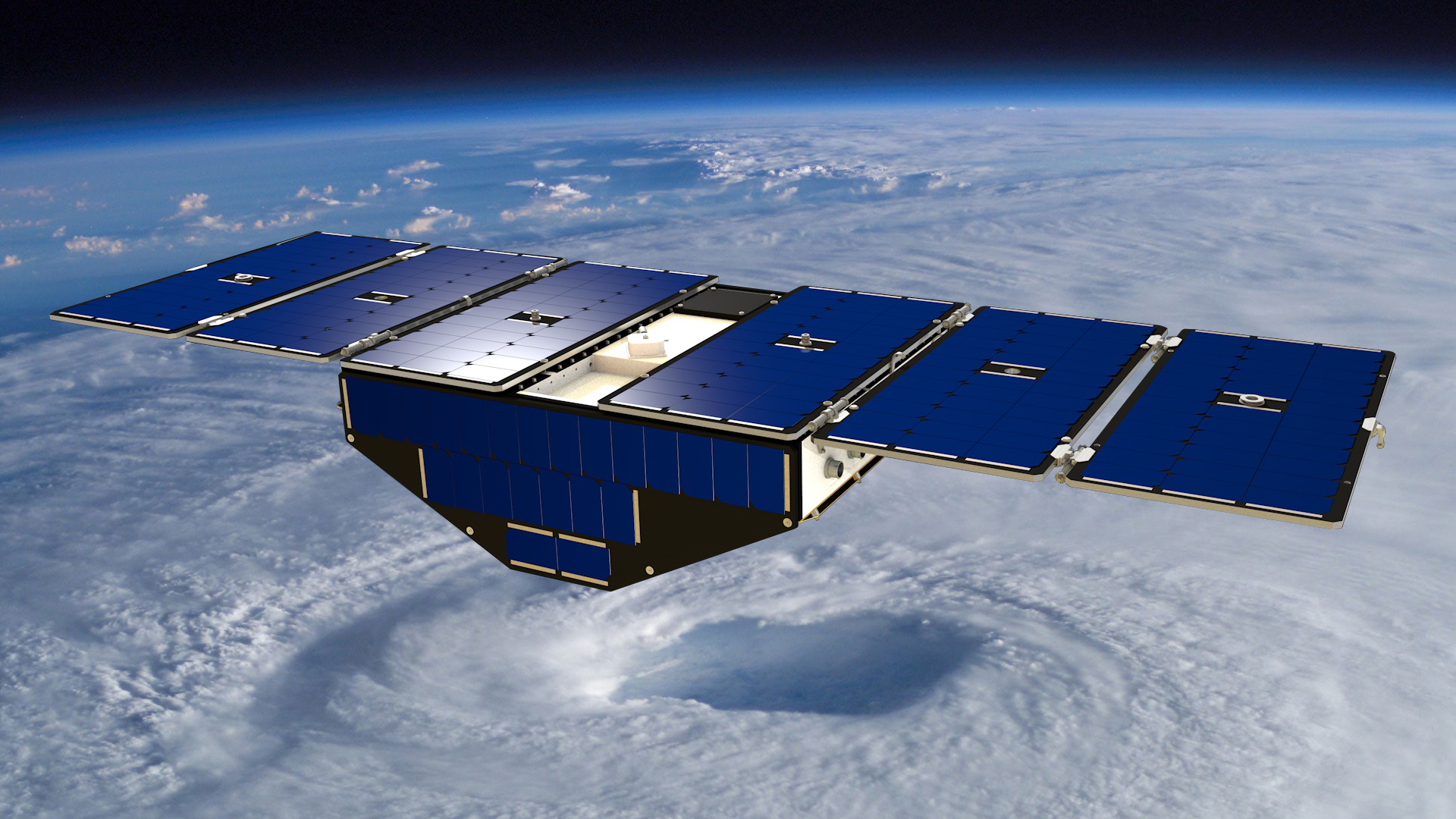New NASA Satellites Could Help Improve Hurricane Warnings

Ten years after Hurricane Katrina ravaged the city of New Orleans and surrounding areas, NASA is building an innovative storm-monitoring system that could make significant improvements in storm monitoring and warnings.
Eight "microsatellites," each slightly larger than a carry-on suitcase, make up NASA's Cyclone Global Navigation Satellite System (CYGNSS) mission. The satellites will orbit the Earth and, together, provide scientists with updates every few hours about developing storms. A single satellite can send updates only every few days, according to a statement from NASA.
NASSA just gave the CYGNSS team the go-ahead to start building the microsatellites. Chris Ruf, principle investigator for CYGNSS, said this new phase marks "the beginning of a new era in hurricane observations." [Photos of Hurricane Katrina From Space]
The eight CYGNSS satellites will provide scientists with measurements of wind speed near the surface of the ocean, at the core of various tropical cyclones, typhoons and hurricanes.
"These measurements will advance forecasting methods by providing data that can lead to better predictions of hurricane tracks, intensities and storm surges," the NASA website for CYGNSS said. "The ability to better monitor and predict the rapid changes in hurricane intensity, such as those observed with Hurricane Katrina, is critical to hurricane forecasters and U.S. coastal communities."
Interestingly, the microsatellites won't actually take measurements of wind speed themselves; they'll collect that data from GPS satellites. This, the mission website said, is what makes the program innovative and cost-effective.
Satellites that measure wind speeds on the surface of the earth use a technique called scatterometry, in which a radar instrument shoots a signal at the ground, the signal bounces back and the instrument looks at how the signal has changed. GPS satellites already in orbit around the Earth are already generating those radar signals, so CYGNSS will only receive the GPS signals. According to NASA, building instruments that both send and receive the signals is much more expensive than instruments that do just one of those things.
Get the Space.com Newsletter
Breaking space news, the latest updates on rocket launches, skywatching events and more!
With this approach, the CYGNESS team will create a "new image of wind speed over the entire tropics every few hours, compared to every few days for a single satellite," the mission home page said. The eight satellites will be spread out around the planet, each successive satellite passing over the same location at 12 minutes apart. They will collect signals from multiple GPS satellite constellations.
The CYGNSS microsatellites will each weigh about 64 lbs. (29 kilograms) and have a wingspan of about 5.5 feet (1.7 meters) with their solar panels deployed. Assembly of the first satellite is underway, with the other seven to be constructed in the next few weeks, NASA said. The satellites are scheduled to be stacked for testing in early 2016, with a scheduled launch date in late 2016, and science operations set to begin during the 2017 Atlantic hurricane season.
Follow Calla Cofield @callacofield.Follow us @Spacedotcom, Facebook and Google+. Original article on Space.com.
Join our Space Forums to keep talking space on the latest missions, night sky and more! And if you have a news tip, correction or comment, let us know at: community@space.com.

Calla Cofield joined Space.com's crew in October 2014. She enjoys writing about black holes, exploding stars, ripples in space-time, science in comic books, and all the mysteries of the cosmos. Prior to joining Space.com Calla worked as a freelance writer, with her work appearing in APS News, Symmetry magazine, Scientific American, Nature News, Physics World, and others. From 2010 to 2014 she was a producer for The Physics Central Podcast. Previously, Calla worked at the American Museum of Natural History in New York City (hands down the best office building ever) and SLAC National Accelerator Laboratory in California. Calla studied physics at the University of Massachusetts, Amherst and is originally from Sandy, Utah. In 2018, Calla left Space.com to join NASA's Jet Propulsion Laboratory media team where she oversees astronomy, physics, exoplanets and the Cold Atom Lab mission. She has been underground at three of the largest particle accelerators in the world and would really like to know what the heck dark matter is. Contact Calla via: E-Mail – Twitter